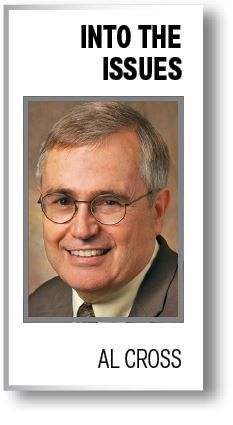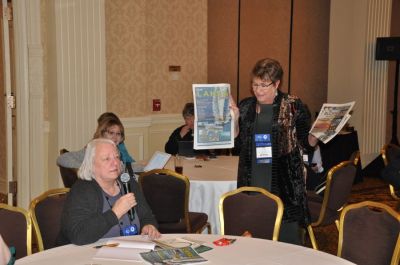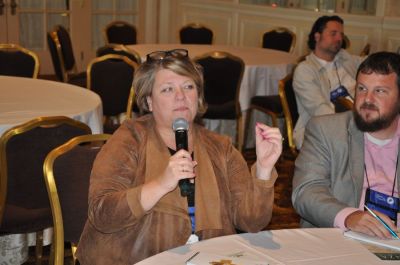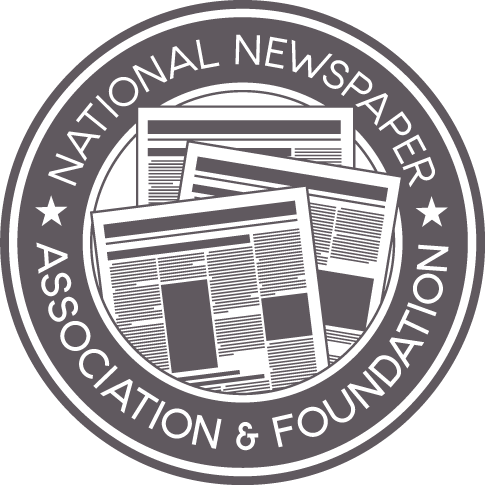Great ideas abound at NNA convention
Nov 1, 2019



In explaining my work, I sometimes say that there are thousands of really good journalists in rural America, but all too often, they are the only person in their newsroom that fits that description. They suffer from the isolation of rurality, with fewer opportunities than urbanites to rub shoulders and exchange ideas with their professional peers.
That observation applies to independent rural publishers, too. They might attend state newspaper meetings, but there’s nothing like the National Newspaper Association convention, where editors and publishers from New England, the North Woods, the Great Plains, the Corn Belt, the Deep South, the Intermountain West, the Pacific Coast and other regions exchange ideas. That’s especially important for the approximately one-third of weekly newspapers not owned by groups, which can be sources of ideas (and instruction). Get them together, and they love to help each other.
This was on display at the Great Ideas Exchange at the National Newspaper Association’s annual convention in Milwaukee Oct. 3. There were too many ideas to share in this limited space, but here are some themes and standouts.
Engagement with the audience is a key task these days, and some circulation ideas at the session were good examples. The Lancaster News in South Carolina delivers to funeral homes 10 copies of the paper for distribution to families and friends who want a copy of an obituary. With a sponsor, the copies count as paid circulation.
The paper also gives all its yearly subscribers a page of coupons (usually $5 each), worth a total of $25, and is trying to get to $50, the price of a one-year-subscription, Publisher Susan Rowell said. The promotion has converted a lot of six-month subscribers, and “You do something for your loyal customers just to keep ‘em,” she said.
Effective engagement means taking every opportunity to build loyalty, and that includes people in the newsroom.
The North Scott Press of Eldridge, Iowa, asks subjects of its stories, “Where do you read the paper?” That indirect approach is better than asking if they subscribe or buy it regularly. If their answer indicates that they don’t, the next question is “Would you like to receive it at home?” and offer a three-month free trial, Publisher Bill Tubbs says. The staffer making the contact gets $3 for a free trial and $7 for a paid subscription.
Many newspapers have made magazines and directories good revenue sources. The Echo Press in Alexandria, Minnesota, produces a Churches of Douglas County magazine every other year, charges $50 for a listing and gives each church 10 copies. Some papers provide membership lists that the paper uses to solicit sponsorships, Publisher Jody Hanson said. “It’s a really good reference guide,” she said, adding that some churches initially declined to participate, but now say, “Don’t ever do it without us.”
The Echo Press also hires a Santa Claus for three hours after school, asks parents to bring a food item to donate to the needy, takes photos of Santa with the kids, provides a link to the pictures and prints them in a holiday-greetings section with kids’ letters to Santa.
Hanson also had a good idea for the typical “progress edition” many papers publish in winter when ads are slow — along with features on businesses, list building permits and related reports from local governments, which are documentary evidence of community development.
Letti Lister of the Black Hills Pioneer in Spearfish, South Dakota, said she was told that “progress sections were dead,” but theirs attracts many non-regular advertisers. It’s not called a progress edition, but “Our Towns,” which sounds like something that people will keep a long time, adding to its ad value.
The Pioneer marked its 140th anniversary by mining its historic archives in the last quarter of the 19th century, starting with reports of the battle at Little Big Horn. The paper did a feature every Saturday, then a compilation without ads but a $10 price tag.
A newspaper’s big anniversaries can be celebrated with a section that also celebrates lesser anniversaries of other businesses, said Peggy Scott of the Leader in Festus, Missouri. It marked its 20th and 25th anniversaries and chose the most compelling stories of other businesses, with no repeats between the two.
Don’t run a bunch of extra photos without considering opportunities for a sponsored page, spread or even a section, said Mary Huber of the Archbold (Ohio) Buckeye. Local schools have many events that lend themselves to this: athletics, theatrical presentations, science fairs and so on.
Local festivals are natural opportunities for special sections, but the Grant County Herald in Minnesota takes it up a few notches with a $100 treasure hunt for a hidden “newsbox” with a coin, promoted with a spread of ads with clues to its location. Almost every advertiser participates. The last clue is posted at the Herald office during the festival, and dozens of people line up to get it.
Bill Ostendorf of Creative Circle Media Solutions urged publishers to do a total-market-circulation edition once or twice a year. “Advertising more than pays for it, and it’s a really good promotional thing” for circulation.
I added that my institute encourages newspapers to include a health and wellness section in its TMC editions; our research shows that people need and want health informations and are more likely to subscribe to the newspaper if they know it regularly has such information. Also, most health-care providers have a budget for advertising, and newspapers are leaving a lot of that money on the table.
One of the session’s more interesting ideas came from Nick Seibel of the Silver City (New Mexico) Daily Press and Independent. In New Mexico, each county has a lobbying day during legislative sessions, and his Grant County has long had one of the more ostentatious. The paper does a special section about the county’s attractions and its legislative priorities, printing 3,000 extra copies that are distributed to legislators and other officials around the capital of Santa Fe. Seibel said the project reinforces the importance of the newspaper to movers and shakers. And that’s what makes this idea worth mentioning.
Wish we could have included them all!
Al Cross edited and managed rural newspapers before covering politics for the Louisville Courier Journal and serving as president of the Society of Professional Journalists. He is a journalism professor at the University of Kentucky and director of its Institute for Rural Journalism and Community Issues, which publishes The Rural Blog at http://irjci.blogspot.com.







